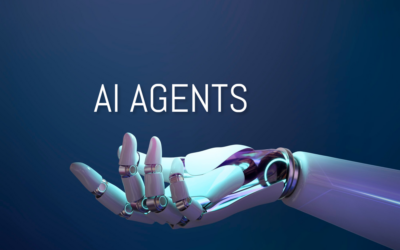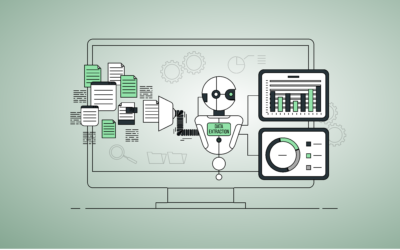Table of Content
Generative AI is rapidly gaining traction across various business functions. A recent McKinsey survey shows that the most common use cases for enterprises adopting generative AI are marketing, sales, and product development. [1]. Many organizations have become more efficient and competitive with the help of AI, reporting cost reductions and revenue increases [1]. Businesses benefit from AI-generated content in marketing, advertising, and other commercial uses, enhancing creativity, streamlining content production, and increasing engagement.
Generative AI is helping marketers, designers, and other creative team members iterate effectively throughout the project lifecycle. This technology allows teams to collaborate more efficiently, from ideation and concept creation to production and release, resulting in a faster workflow. Creating a Shutterstock bot provides a great opportunity to build your generative AI strategy and stay ahead in a competitive landscape.
This blog post discusses the concepts and technologies involved in a use case for creating visual assets for creative teams—specifically, accessing high-quality images through a Shutterstock bot for content creation and training computer vision models. Krasamo is an AI development company based in Dallas, Texas, with 15 years of experience in software development. Contact our AI engineers for more information.
What is Shutterstock?
Shutterstock is an AI-powered platform or interface that provides tools and services for accessing, searching, and utilizing Shutterstock’s extensive library of images, videos, and 3D models. Shutterstock.AI leverages artificial intelligence to enhance these capabilities through AI-driven search algorithms, metadata tagging, and content generation.
What are AI Images?
AI images, or AI-generated images [2], are digital visuals created or manipulated by artificial intelligence algorithms rather than being captured by traditional means like photography or hand-drawn art. These images are generated using machine learning models trained on large datasets of existing images, allowing the AI to create new visuals that often mimic real-world scenes or artistic styles.
Shutterstock Image Datasets
You can build, test, and deploy applications by accessing Shutterstock image datasets for your creative processes and model training, making Shutterstock assets available to end users within your platform.
Shutterstock provides licensed (royalty-free) photographs, vectors, illustrations, videos, music, and 3D models for your projects. Its large community of contributors adds hundreds of thousands of authentic images weekly, making it a vast dataset ideal for enterprises to build upon for innovative content creation and advanced AI applications. Your application can consume Shutterstock assets directly through a user interface REST API and with a license to use in commercial projects. You can customize content to match your audience or use curated collections to help users discover relevant visuals.
Shutterstock Bot
To integrate your application with Shutterstock libraries, you must use the Shutterstock API. This way, you can access its data for a flat fee. However, Shutterstock does not function as a chatbot or automated conversational agent.
You can create a bot–a Shutterstock bot to automate the AI image generation within your application. A Shutterstock bot is an automated software agent designed to interact with Shutterstock through its API and perform specific functions such as searching, retrieving, and organizing images, videos, and other digital assets. The bot can automatically search for images based on predefined criteria, keywords, or prompts and retrieve these assets from Shutterstock’s vast library.
Shutterstock also has an image generator that creates custom images based on text prompts. This tool can be integrated into the bot to enhance its capabilities. In addition, Shutterstock’s image generator now integrates DALL-E 3, making it even more powerful.
A Shutterstock bot streamlines and automates content acquisition and management, allowing companies to utilize Shutterstock’s resources without manual intervention efficiently. This can be particularly valuable when large volumes of content must be sourced and integrated into various business processes, such as marketing, advertising, or media production. The bot bridges Shutterstock’s content library and the company’s internal systems, automating repetitive tasks and ensuring the content is always up-to-date and legally compliant.
Shutterstock Bot Development
At Krasamo, our AI engineers can build a chatbot that feeds from Shutterstock’s vast libraries of high-quality content to improve your creative processes, products, and services and train or fine-tune your models. Working on generative AI app development and infusing computer vision features into your products and processes will elevate your company to a higher standard.
Imagine a company developing an AI model for an e-commerce platform that needs to recognize and categorize products. The Shutterstock bot can:
- Automatically retrieve high-quality product images from Shutterstock.
- Enrich these images with metadata, such as product categories and tags.
- Augment the images to create a diverse training dataset.
- Ensure all images are licensed for commercial use.
- Feed the prepared dataset into the training pipeline, enabling the model to learn effectively.
What are Computer Vision Models?
Computer vision models are specialized AI systems designed to interpret and analyze visual data, such as images or videos. These models use algorithms that mimic human visual perception, enabling machines to recognize objects, understand scenes, and make decisions based on visual inputs.
Typically, computer vision models [3] are trained on large datasets of labeled images, learning to identify patterns, features, and objects within those images. Once trained, these models can perform tasks like image classification, object detection, facial recognition, and scene understanding, making them essential in applications like autonomous vehicles, security systems, medical imaging, and e-commerce product searches.
Model Training
Models are integrated into the Shutterstock bot to enhance its capabilities. These improvements include more sophisticated search and retrieval, automated content tagging and categorization, the generation of new content or variations on existing content, and an enhanced user experience through more relevant and customizable results. The bot can be integrated into existing machine learning pipelines, automatically feeding data into the training process. This streamlines the workflow and ensures that the most relevant and up-to-date data is always available for training.
Use Cases for Shutterstock Bot
Email Marketing Enhancement
- Integrating high-quality Shutterstock images into email campaigns to improve click-through rates and overall performance.
- Automating the process of finding and incorporating relevant images for email content.
Advertising Improvement
- Helping advertisers, especially small and medium businesses, access and use high-quality, inclusive imagery for their ad campaigns.
- Streamlining the process of creating image-based ads within advertising platforms.
Content Creation Automation
- Assisting marketers, designers, and creative teams in quickly finding and using relevant images for various content creation needs.
- Speeding up the ideation and concept creation phases of projects.
Computer Vision Model Training
- Providing large datasets of diverse images for training AI models in computer vision tasks.
- Supporting the development of technologies like autonomous vehicles, e-commerce platforms, and social media content moderation.
Metadata Tagging and Organization
- Automating the process of tagging and categorizing large volumes of visual content.
- Enhancing searchability and organization of digital asset libraries.
Personalized Image Recommendations
- Suggesting relevant images based on user preferences, past searches, or project needs.
Inclusive Marketing Support
- Helping marketers find diverse and inclusive imagery to create more representative ad campaigns.
E-commerce Product Imagery
- Assisting in finding or generating appropriate images for product listings and catalogs.
Social Media Content Creation
- Automating the process of finding and sizing images for various social media platforms.
Brand Asset Management
- Helping companies organize and access their licensed Shutterstock images across teams.
Video Content Enhancement
- Assisting in finding relevant stock footage or images to complement video projects.
Real-time Image Editing and Customization
- Users can make quick edits or customizations to Shutterstock images within their workflow.
Compliance and Licensing Management
- Ensuring that users are accessing and using properly licensed images for their projects.
Cross-platform Integration
- Enabling access to Shutterstock’s image library directly within various software platforms and tools used by creative professionals.
Shutterstock’s Metadata
Metadata refers to the descriptive information about data, such as images, videos, or other digital assets that a chatbot might retrieve from Shutterstock. Metadata provides essential details about the content, such as title, keywords, description, tags, licensing information, file information, etc.
Metadata allows the chatbot to perform more accurate and refined searches. For example, users can search for images using specific keywords or descriptions, and the Shutterstock bot can filter and retrieve the most relevant assets from Shutterstock’s library.
The chatbot can use metadata to better understand the context of a search query, providing results that are more aligned with the user’s intent.
Metadata helps automatically categorize and organize assets, ensuring they are easily accessible and logically grouped. This process helps integrate the assets into existing workflows, such as automatically populating marketing materials with relevant images.
The Shutterstock bot can use metadata to recommend content that matches the user’s previous searches or preferences, enhancing the personalization of the content discovery process.
Metadata enables the chatbot to provide more informative responses to user queries by offering detailed descriptions or suggesting related content based on the user’s needs.
Automated Metadata Tagging Process
Automated Metadata Tagging is a process where metadata (descriptive information about content) is automatically generated and assigned to digital assets, such as images, videos, and 3D models, using machine learning algorithms and artificial intelligence (AI). This process helps organize, categorize, and make the content easily searchable and accessible without requiring manual tagging.
Digital assets such as images or videos are passed through an AI model that analyzes the content to understand its features and elements. The algorithms analyze the visual elements of the content, such as objects, colors, shapes, and patterns. Also, AI analyzes textual elements within images or videos, context, etc.
Based on the extracted features, the system automatically assigns relevant keywords to the content and categorizes them into specific groups or themes based on the detected features. As the system processes more content, it learns from user interactions and corrections, continually improving its tagging accuracy.
The automatically generated metadata is stored and becomes crucial for making the content searchable and filterable based on various criteria.
Benefits of Automated Metadata Tagging
Automated metadata decreases the labor-intensive process of manually tagging each piece of content, saving time and resources. It helps when handling large volumes of content, making it ideal for organizations with extensive digital libraries. It provides consistency in the process, enhances searching and filtering assets, and provides real-time processing by your application.
Key Take Away
A Shutterstock bot presents a powerful solution for organizations looking to enhance their creative teams’ productivity through generative AI technologies. By leveraging Shutterstock’s vast library of high-quality, licensed content and advanced AI capabilities, your organization can:
- Streamline content creation processes, significantly reducing image search and selection time.
- Improve the quality and relevance of visual content across marketing, advertising, and product development.
- Enhance AI model training for computer vision applications, supporting innovations in e-commerce, autonomous vehicles, and more.
- Ensure compliance with licensing requirements, mitigating legal risks associated with content usage.
- Automate metadata tagging, improving asset organization and searchability.
Importantly, Shutterstock provides robust security and compliance measures, ensuring that all content accessed through their API is properly licensed for commercial use. This protects your organization from potential copyright infringement issues while providing access to a diverse, constantly updated library of images, videos, and 3D models.
By partnering with Krasamo to create a custom Shutterstock bot, you’re not just investing in a tool—you’re empowering your creative teams with AI-driven capabilities that can dramatically increase efficiency, spark innovation, and maintain the highest quality and compliance standards in your visual content strategy.
References
[1] The state of AI in early 2024: Gen AI adoption spikes and starts to generate value












